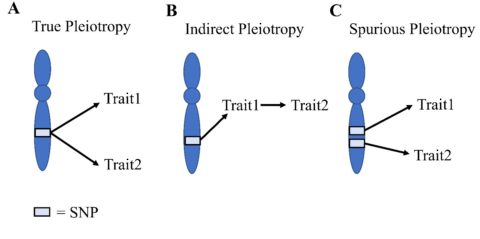Pleiotropy – the multiple effects of a single mutation!

In 1866, Gregor Mendel identified, when performing his famous experiments with peas, that some traits always show correlations with other traits e.g. plants with colored seed coats always exhibited colored flowers and leaf axils. This observation led to the discovery of a phenomenon known as pleiotropy. It describes the effect a single mutation or gene has on several traits.
Ever since, biologists have been fascinated with pleiotropy and tried to analyze its effect in humans and plants alike. But the concept of pleiotropy is not as simple as one gene or mutation affecting two or more phenotypes. Several different forms of pleiotropic effects exist which makes its discovery and interpretation difficult. Therefore in recent years, quantitative geneticists developed new approaches to identify pleiotropy in large populations enabling the identification of, previously unknown, genes affecting several phenotypes at the same time. This knowledge increases our understanding of the complex genetic architecture of important plant traits and how to better enhance different crop plants.
This review has been published recently in the Journal of Plant Physiology entitled with “Quantitative genetics of pleiotropy and its potential for plant sciences”.
